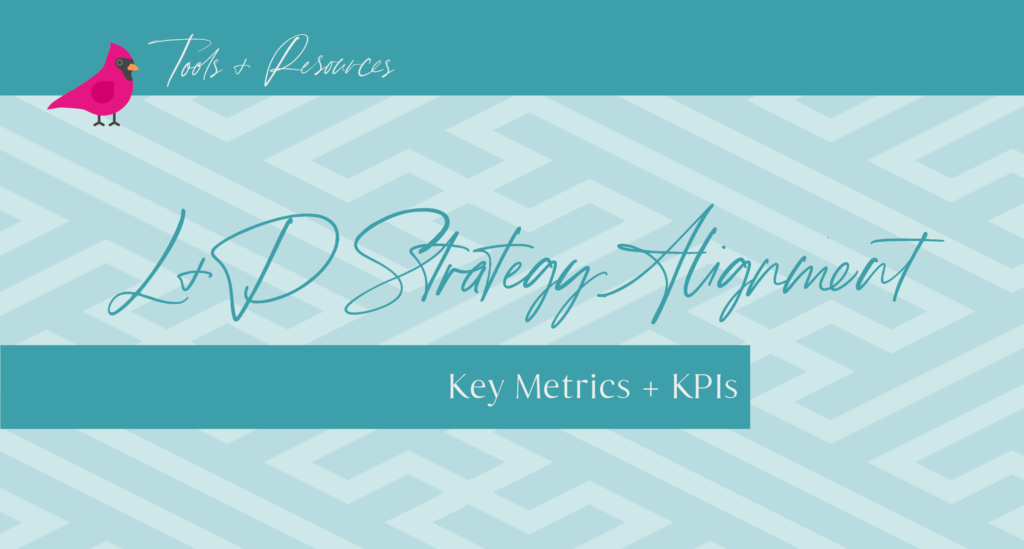
When it comes to Learning + Development (L+D), knowing what’s working and what isn’t is essential. Metrics and Key Performance Indicators (KPIs) are not just numbers—they’re your ‘North Stars’. They tell you whether your training programs are truly impacting business outcomes or just checking a box. If you want to ensure your L+D efforts are making a real difference, these are the key metrics and KPIs you need to keep an eye on:

Let’s get straight to the bottom line: how is your training impacting your business? These KPIs link your L+D initiatives directly to business outcomes, showing how your efforts support your organizational goals.
Revenue Growth: Look at how much your revenue has increased as a result of your training programs. Whether it’s sales training or customer service enhancements, the goal is to see a tangible uptick in the bottom line.
Productivity Improvement: Are your employees more productive after training? Track metrics like tasks completed, output per hour, or overall efficiency to see if there’s a noticeable improvement.
Quality Metrics: Training should improve the quality of your products or services. Check for reductions in error rates, fewer defects, or enhanced customer satisfaction scores to measure the impact.
Customer Satisfaction: How satisfied are your customers? This metric helps you see the impact of customer service training on client perceptions and loyalty.

Training Completion Rates: Are employees finishing their courses? High completion rates are a good indicator that your training is engaging and relevant.
Learner Engagement: Measure engagement by looking at participation rates, time spent on learning activities, and how much interaction is happening with the training materials. Surveys and feedback forms can also give you a read on this.
Knowledge Retention and Application: Use assessments before and after training to see how much knowledge and which skills are sticking. But don’t stop there—track how well these skills are being applied on the job to ensure they’re making a difference.
Learner Satisfaction: After each training session, get feedback on the content, delivery, and overall experience. Surveys or interviews right after the training can provide valuable insights.

These KPIs are all about measuring the development of specific skills and competencies that align with your company’s strategic goals.
Time to Proficiency: Measure how quickly employees are reaching proficiency in new skills after training. The faster they get up to speed, the more effective your training programs are.
Skills Acquisition Rate: What percentage of employees are successfully acquiring new skills or competencies through training? Track this through skills assessments or practical evaluations.
Competency Improvement: Assess how much improvement there has been in key competencies that are critical to your organization’s strategic objectives. Regular evaluations, self-assessments, or manager assessments can give you this data.

These metrics tie your training programs directly to improvements in employee performance and productivity.
Reduction in Time to Mastery / Competency: Measure how much faster new employees or those in new roles become fully competent and productive. This demonstrates the effectiveness of your onboarding or reskilling programs.
Performance Evaluation Scores: Look at employee performance evaluation scores before and after training to see if there are improvements in key areas.
Sales Performance: For sales teams, track changes in metrics like the number of deals closed, revenue generated, or average deal size after they complete sales training.

Here, we’re looking at the financial impact of your training programs, including their return on investment (ROI) and cost-effectiveness.
Training Cost Savings: Track cost savings from training initiatives, such as reduced turnover rates, fewer errors, or lower recruitment costs due to improved employee performance and engagement.
Return on Investment (ROI): Calculate the ROI of your training programs by comparing the financial benefits (like increased revenue or reduced costs) to the total costs of the training (including materials, time, and resources). A positive ROI shows that your training is paying off.
Cost per Learner: How cost-effective are your training programs? Calculate the total cost of the program divided by the number of participants. Lower costs per learner indicate efficient use of resources.

These metrics focus on how your L+D programs impact employee retention, satisfaction, and overall morale.
Internal Promotion Rates: Track how often employees are promoted from within the organization. Higher promotion rates can signal successful upskilling and development efforts.
Employee Retention Rates: Measure changes in employee retention rates after implementing training programs. Effective L+D strategies should improve retention by boosting job satisfaction and engagement.
Employee Satisfaction and Engagement Surveys: Conduct regular surveys to gauge how employees feel about your L+D programs. High satisfaction and engagement levels indicate that training is meeting their needs and expectations.

These KPIs assess how well your L+D programs align with your organization’s strategic goals and contribute to its long-term success.
Change Readiness: Assess how prepared your organization is to adapt to change after L+D initiatives. This includes measuring employee readiness for new technologies, processes, or strategic shifts.
Alignment with Strategic Goals: Evaluate how well each L+D program aligns with specific organizational goals, like market expansion, innovation, or operational efficiency. This can be done through alignment review during strategic planning or by mapping training objectives to business goals.
Capability Development: Measure the development of organizational capabilities that are critical to achieving strategic objectives, such as leadership development, innovation, or digital transformation.
Tracking these key metrics and KPIs will enable you to effectively measure the success of your L+D programs, ensure alignment with organizational strategy, and drive meaningful business results. These metrics aren’t just numbers on a page—they’re the evidence of your L+D efforts. Use them to guide your decisions, maximize the impact of your training investments, and, ultimately, fuel your organization’s growth and success! 🌟


Leave a Reply